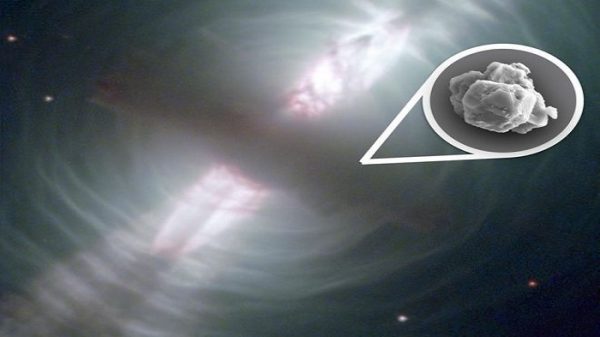What does it mean for Indo-Pacific?

Syed Raiyan Amir and Md Mufassir Rashiz:
US PRESIDENT Joe Biden, UK prime minister Rishi Sunak and Australian prime minister Anthony Albanese, leaders of the AUKUS, laid out a three-phase strategy that finally results in Canberra and London building an advanced nuclear submarine for Australia’s defence. The metadata about the three countries’ bold strategy to counter China’s quick military buildup in the Pacific was made public on March 13, more than a year after the AUKUS pact was initially signed. Under this multi-decade pact, the partners (the US, the UK, and Australia) will allocate technology, labour and financing to develop a combined fleet of sophisticated nuclear-powered submarines, thereby installing a stronger naval force in the Indo-Pacific region. In the first phase of the pact, Perth’s naval base, HMAS Stirling, will undergo massive reconstruction worth $8 billion, where the nuclear-powered submarines will be stationed in Western Australia starting in the early 2030s. Under this agreement, Australia will acquire nuclear-powered submarines as part of the AUKUS security deal, which the military’s senior brass believes is the most important for Britain since the US helped it become one of the few nuclear powers in 1958.
Apart from it, as part of the agreement, starting this year, US submarines will pay longer and more frequent visits to the base, and UK submarines will come after them on the route in 2026 and in 2027 as part of the Submarine Rotational Force West until Australia procures its own US Virginia-class submarine in the early 2030s. However, Australia’s nuclear submarine programme is expected to cost up to $368 billion over the following three decades, and the federal government has confirmed that it will purchase at least three nuclear submarines made in the US and provide ‘significant additional resources’ to US docks. This agreement has profound geo-strategic implications against the backdrop of the US-China maritime battle in the Indo-Pacific region. It will not only add fuel to the fire of their strategic competition but also evoke the growing militarisation amid the Taiwan crisis.
Three phases of agreement
ACCORDING to the metadata published on March 13, the pact will be implemented in three phases.
The first phase, ‘Optimal Pathway,’ articulated by Biden, includes American and British submarines visiting Australian ports and integrating those sailors into their armed forces and nuclear power training facilities. Furthermore, Australia will not use nuclear propulsion in its submarines, but the United States and the United Kingdom will. Meanwhile, Australia will construct and accept technological know-how from its partners to increase its capacity. The three nations will take part in a rotating submarine force, fittingly titled Submarine Rotational Forces West, beginning as early as 2027.
In the second phase, Australia will purchase three Virginia-class nuclear submarines from the United States, with the option to purchase two more if necessary, once the construction of its submarine base is complete. It is likely to happen in the early 2030s.
The agreement’s core is the third phase, which will start late in the following decade. British troops will receive the SSN AUKUS, a new sophisticated American Virginia-class submarine. Early in the 2040s, Australia will implement the same revolutionary design for its naval forces. Under the pact, the UK also intends to construct its first AUKUS submarine, combining US combat systems and armaments with its Astute-class submarine.
Ramifications for Indo-Pacific
AUKUS is an impressively ambitious project, and nuclear-powered submarines are only the beginning of a new way of collaboration between the United States, Australia and the United Kingdom. The three countries intend to expand their technological collaboration, increase industrial capacity in all three countries, and more closely coordinate their strategic planning. For them, this is part of a larger effort to stabilise the Indo-Pacific region, control its geopolitical dynamics, and persuade other like-minded allies to join in. Certainly, such massive defence cooperation between these naval powers will have significant strategic ramifications for the region and beyond.
The ramifications would result from the deployment of US nuclear-powered submarines in Australian territorial waters and the establishment of a naval station by the US and UK in Australia. Besides, the geostrategic location of the Perth Island is very significant, which will provide the USA with a strategic advantage to secure its presence in the Malacca Strait. The US military’s ability to project power and respond to possible threats in the region would be considerably improved by the presence of US nuclear-powered submarines in the Indo-Pacific region. For the US Navy, which has historically relied on aircraft carriers to project force in the Indo-Pacific, this would be a huge move. Moreover, the deployment of more nuclear-powered submarines would considerably improve the US and UK’s capacity to conduct surveillance and collect information in the Indo-Pacific region owing to their routine presence. The US and UK would have a significant strategic edge because these submarines can stay down for lengthy periods of time and are very challenging to locate and track.
On the flip side, it would represent a substantial expansion of US military presence in the Indo-Pacific region that can be interpreted as a direct challenge to China’s rising military ambitions in the South China Sea and the larger Indo-Pacific region. This action might increase tensions between the US and China even further and might even intensify their ongoing conflicts. China has been an active participant in the South Pacific and Indian Oceans, establishing territorial claims across the resource-rich area that also serves as a hub for some of the world’s busiest shipping lines. China’s growing hostility towards Taiwan and the South China Sea has been particularly noteworthy. While China’s territorial aspirations have generated strong reactions throughout the West, Australia, a longstanding hub of Pacific influence, has been most immediately impacted. Nevertheless, it may also increase regional security worries for other countries in the region, especially those that are apprehensive of American military presence. Ultimately, US nuclear-powered submarines in the Australian seas and the US and UK building a joint naval station would have far-reaching geopolitical repercussions and may affect the balance of power in the region.
Last but not least, the growing number of submarines in Australian waters may have an impact in the field of surveillance and information gathering. It could particularly pose new difficulties for China’s surveillance activities in the area, possibly compelling it to upgrade its own naval capabilities or employ novel strategies to counter the presence of the US and UK. Whatever the repercussions are, this will certainly pose a challenge to the Indian Ocean littorals and their maritime ambition. Moreover, with the growing security challenges, the issue of climate change, maritime resources and the prospects of the blue economy will be undermined.
Syed Raiyan Amir and Md Mufassir Rashid are research associates at the KRF Centre for Bangladesh and Global Affairs.























Leave a Reply